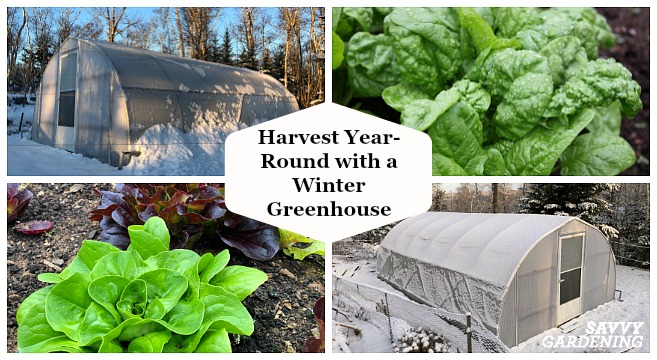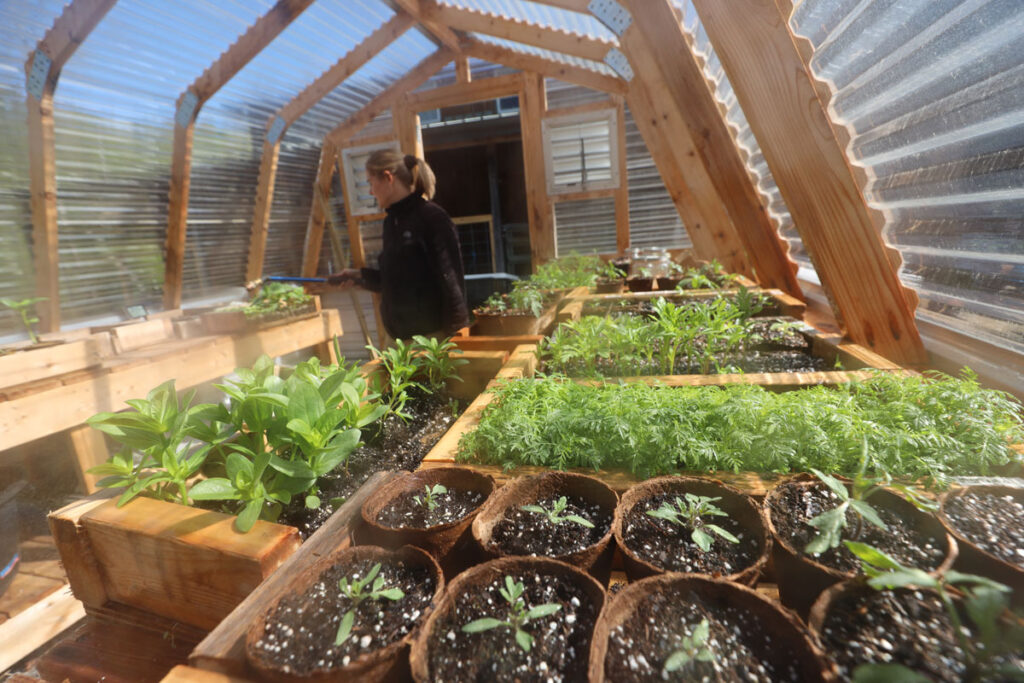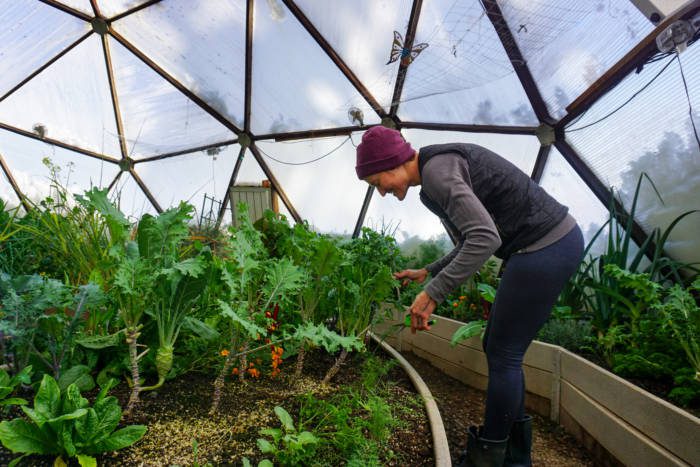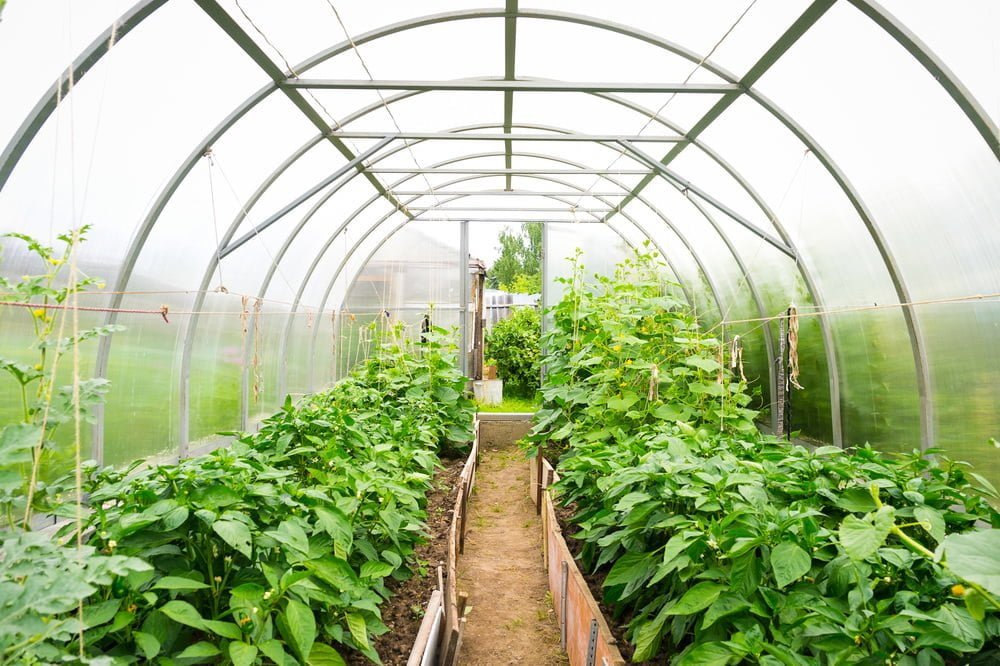
If you’re a plant enthusiast, one question that might have crossed your mind is whether you can use a greenhouse to overwinter your beloved plants. The good news is, you absolutely can! A greenhouse is not only a haven for plants during the summer months, but it can also provide them with the perfect conditions to survive the harsh winter. By harnessing the power of sunlight, controlled temperature, and protection from the elements, a greenhouse becomes a cozy retreat for your plants during the cold season. In this article, we will explore the benefits of using a greenhouse to overwinter plants and provide some helpful tips to ensure their well-being throughout the winter months. So, get ready to learn how to create a safe haven for your plants and keep them thriving all year round! Yes, you absolutely can use a greenhouse for overwintering plants! Greenhouses are a great way to provide a controlled environment that protects your plants from the harsh conditions of winter, allowing them to continue to thrive and grow. However, it’s important to choose the right greenhouse and properly prepare and maintain it to ensure the best results. In this article, we will guide you through the process of choosing the right greenhouse, preparing it for overwintering, selecting the appropriate plants, and caring for them during the winter months. So let’s dive in and discover all the important factors to consider when using a greenhouse for overwintering plants.
Choosing the Right Greenhouse
Size of the Greenhouse
The size of the greenhouse largely depends on the number and size of plants you wish to overwinter. Consider both your current collection and any future additions. A greenhouse that provides ample space for proper plant growth and allows for easy movement and organization should be your primary consideration. Take into account the height, width, and length needed to accommodate your plants comfortably. Planning ahead for potential expansion can also be beneficial.
Material of the Greenhouse
Selecting the right material for your greenhouse is vital as it affects factors like insulation, durability, and light transmission. The most common materials used for greenhouses are glass, polycarbonate, and polyethylene. Glass provides excellent light transmission but can be expensive and may reduce insulation. Polycarbonate is a great alternative as it provides good insulation and light transmission, while also being more durable and cost-effective. Polyethylene is a lightweight material that provides excellent insulation but may have reduced light transmission. Consider your climate, budget, and personal preferences when choosing the material for your greenhouse.
Insulation of the Greenhouse
Proper insulation is crucial for maintaining a stable and suitable environment for your plants. Insulated greenhouses help retain heat during the colder months, reducing the energy required to keep the temperature at adequate levels. Improve the insulation of your greenhouse by adding layers of insulation material to the walls and roof, such as bubble wrap or double-glazing. Additionally, insulating the flooring can also prevent cold drafts from entering. Don’t forget to seal any gaps or cracks in the structure to minimize heat loss.
Preparing the Greenhouse for Overwintering
Cleaning the Greenhouse
Start by thoroughly cleaning your greenhouse before overwintering your plants. Remove all debris, fallen leaves, and dead plants from the previous season. Use a mild detergent or disinfectant to clean all surfaces, including the walls, floors, benches, and pots. This helps prevent the spread of pests and diseases. Don’t forget to clean the windows to maximize light penetration. A clean and tidy greenhouse provides a healthy environment for your plants and reduces the likelihood of pests and diseases.
Organizing the Space
Proper organization of your greenhouse is essential for efficient plant care and space utilization. Prioritize easy access and sufficient space for each plant. Install shelves, hanging baskets, or benches where necessary to optimize vertical space. Group plants with similar temperature and humidity requirements together to create microclimates. Consider using labels or a plant inventory system to keep track of different plants. A well-organized greenhouse not only makes maintenance easier but also enhances the aesthetic appeal of your plant sanctuary.
Temperature and Humidity Control
Keeping your greenhouse at the right temperature and humidity levels is crucial for plant health during the winter months. Invest in a reliable thermometer and hygrometer to monitor these parameters accurately. For most plants, a temperature range of 45-55°F (7-13°C) is ideal. However, some plants may have specific requirements, so be sure to research the optimal temperature ranges for your individual plant species. Use heaters, such as electric or propane heaters, to maintain the desired temperature, and consider installing ventilation options like vents or fans to regulate humidity levels.

This image is property of savvygardening.com.
Selecting Plants for Overwintering
Cold-Hardy Plants
Cold-hardy plants are those that can tolerate frost and freezing temperatures. These plants are ideal for overwintering in unheated or minimally heated greenhouses. Some popular cold-hardy plants include kale, Swiss chard, winter lettuce, and many herbs such as rosemary and thyme. Research and select plants that are known for their ability to withstand low temperatures and fluctuations in weather conditions. It’s always a good idea to consider local recommendations and consult with experienced gardeners or plant experts to ensure successful overwintering.
Tender Plants
Tender plants are those that are more sensitive to cold temperatures and require additional protection and heat during the winter months. These plants should be overwintered in a greenhouse with adequate heating or insulation. Examples of tender plants include tropical plants like orchids, citrus trees, and hibiscus. Choose plants that you particularly enjoy or those that have sentimental value. Keep in mind that maintaining the appropriate temperature and humidity levels for these plants may require more attention and resources.
Considerations for Different Plant Types
Different plant types have unique overwintering requirements. Some plants may go dormant during the winter, while others may continue to grow and produce. Consider the specific needs of each plant type in terms of light, temperature, humidity, and water requirements. For example, succulents and cacti typically require less water and cooler temperatures, while flowering plants like African violets may require more warmth and consistent humidity. Tailor your care routine to the specific needs of the different plant types you choose to overwinter.
Preparing Plants for Overwintering
Pruning and Cleaning Plants
Before bringing your plants into the greenhouse for overwintering, it’s important to properly prepare them. Prune any dead or damaged foliage to promote healthy growth. Remove any fallen leaves or dried flowers to prevent the spread of pests and diseases. Gently clean the leaves and stems with a soft cloth or sponge to remove dust and debris. This not only enhances the aesthetic appeal of your plants but also reduces the risk of pests and diseases.
Treating and Preventing Pests and Diseases
Pests and diseases can thrive in enclosed spaces like greenhouses, especially during the winter months. As a preventive measure, inspect your plants for any signs of pests or diseases and treat them accordingly. Use organic or chemical treatments specifically formulated for the type of pest or disease you are dealing with. Additionally, ensure good air circulation within the greenhouse to discourage the buildup of humidity, which can contribute to fungal diseases.
Potting and Repotting Plants
Ensure your plants are potted in appropriate containers with well-draining soil. Before overwintering, check the condition of each plant’s pot and consider repotting if necessary. Repotting allows for fresh soil, better drainage, and space for healthy root growth. When repotting, choose a slightly larger pot size to accommodate potential growth during the winter months. Additionally, consider adding mulch to the top of the soil to help retain moisture and provide insulation for the roots.

This image is property of abundantpermaculture.com.
Temperature and Humidity Management
Monitoring and Adjusting Temperature
Regularly monitor the temperature in your greenhouse to ensure it remains within the optimal range for your plants. Some greenhouses come with built-in thermostats and automated systems that adjust the temperature as needed. If your greenhouse doesn’t have these features, manually adjust the temperature using heaters or insulation methods to maintain the desired range. Be cautious not to expose tender plants to sudden temperature drops, as they can experience shock and damage.
Monitoring and Maintaining Humidity
Maintaining the appropriate humidity levels in a greenhouse is essential for the overall health of your plants. Different plant species have varying humidity requirements, so be sure to research the optimal range for your specific plants. Use a hygrometer to monitor the humidity levels and make adjustments as necessary. Misting your plants or placing trays of water near them can help increase humidity. Conversely, if the humidity is too high, creating good airflow and ventilation can assist in maintaining a healthy environment.
Using Heating and Cooling Systems
Heating and cooling systems are essential in maintaining a stable environment in your greenhouse throughout the winter. Electric heaters, propane heaters, or even solar-powered heaters can provide warmth during colder periods. Consider installing insulation materials, such as greenhouse bubble wrap or double-glazing, to improve heat retention. On the other hand, if temperatures start to rise, consider automated vents, fans, or shade cloth to cool down the greenhouse. These systems help maintain a favorable climate for your plants, ensuring their survival and growth.
Lighting Needs of Overwintering Plants
Providing Sufficient Natural Light
Light is crucial for plant growth, even during the winter months. Choose a greenhouse location that receives ample natural light throughout the day. South-facing greenhouses generally receive the best sunlight exposure. Ensure that no structures or trees block the sunlight from reaching your plants. Clean the greenhouse windows regularly to maximize light transmission. If natural light is limited, supplement with artificial lighting to ensure your plants receive the necessary illumination.
Supplementing with Artificial Lighting
In regions with limited daylight hours during the winter, supplementing with artificial lighting becomes necessary. LED grow lights are a popular choice due to their energy efficiency and versatility. They produce the right spectrum of light needed for plant growth and can be adjusted to the required brightness. Position the lights at an appropriate height above the plants to ensure optimal coverage. Consider using timers to simulate natural light cycles and avoid overexposure or underexposure to light.
Determining Optimal Light Levels
Different plants have varying light requirements. While some plants can tolerate lower light levels, others require high-intensity light to thrive. Research the specific light requirements of your plants and adjust the duration and intensity of light accordingly. Typically, most plants need a minimum of 6-8 hours of direct or indirect sunlight per day for healthy growth. Measure the light levels using a light meter or rely on plant-specific recommendations to determine the optimal light duration for your overwintering plants.

This image is property of i0.wp.com.
Watering and Fertilizing
Adjusting Watering Schedule
During the winter months, plants typically require less frequent watering due to reduced evaporation and slower growth. Adjust your watering schedule accordingly to prevent overwatering and waterlogging, which can lead to root rot. Check the moisture level of the soil before watering and only water when the top inch or two of the soil feels dry. Keep in mind that different plants have varying water requirements, so research the specific needs of your plant species and adjust your watering routine accordingly.
Avoiding Overwatering and Waterlogging
Overwatering is a common mistake that can lead to plant stress and root diseases. Ensure proper drainage in your greenhouse by using well-draining pots and soil mixes. Avoid leaving water stagnant in trays or saucers, as this can lead to waterlogging. Consider using self-watering systems or bottom-watering techniques to minimize the risk of overwatering. Monitor the moisture levels of the soil regularly and adjust your watering frequency to prevent excessive moisture accumulation.
Applying Appropriate Fertilizers
Fertilizing your plants during the winter months helps provide them with the necessary nutrients for healthy growth. Use a balanced slow-release fertilizer specifically designed for indoor or overwintering plants. Follow the manufacturer’s instructions for application rates and frequency. It’s important not to over-fertilize, as excess nutrients can accumulate in the soil and cause root burn or other issues. Regularly monitor the condition of your plants to determine if additional fertilization is needed based on any signs of nutrient deficiencies.
Pest and Disease Prevention
Implementing Pest Control Measures
Pests can be a common problem in greenhouse environments, so it’s important to implement effective pest control measures. Regularly inspect your plants for signs of pests such as aphids, mealybugs, or spider mites. If you identify any pests, promptly treat them using organic or chemical pest control methods appropriate for the particular pest. Additionally, practicing good sanitation by removing dead or decaying plant matter can help eliminate potential breeding grounds for pests. Introduce natural predators like ladybugs or nematodes to control pests in an eco-friendly manner.
Identifying and Treating Common Diseases
Fungal diseases and other plant ailments can impact the health of your overwintering plants. Regularly inspect your plants for any signs of disease, such as wilting, discoloration, or unusual growth patterns. Identify the specific disease affecting your plants and treat it using appropriate methods. Fungicides, bactericides, or other disease-specific treatments can be effective in managing plant diseases. Improving airflow, reducing humidity, and practicing good sanitation can also help prevent the spread of diseases in the greenhouse environment.
Creating a Healthy Environment for Plants
Preventing and minimizing pest and disease issues starts with creating a healthy environment for your plants. Ensure good air circulation within the greenhouse by using fans or opening vents if necessary. Avoid overcrowding plants, as it can increase humidity and create an ideal environment for pests and diseases. Maintaining cleanliness by regularly removing debris and dead plant material reduces the risk of pests and diseases. Additionally, providing your plants with proper nutrition, light, and water ensures they are more resilient to potential issues.

This image is property of growingspaces.com.
Monitoring and Maintenance
Regular Plant Inspection
Regular inspection of your plants is crucial for identifying any potential problems before they become severe. Look for signs of pests, diseases, nutrient deficiencies, or other issues. Check the overall health of your plants, including the leaves, stems, and roots. Address any concerns immediately to prevent further damage or spread. By catching problems early on, you can take corrective measures and ensure the overall well-being and longevity of your overwintering plants.
Maintaining Cleanliness in the Greenhouse
Maintaining a clean and tidy greenhouse not only provides a pleasant environment but also reduces the risk of pests and diseases. Regularly remove fallen leaves, dead plant material, and debris from the greenhouse. Clean the surfaces, including the walls, floors, benches, pots, and equipment. Dispose of any plant waste properly to prevent the spread of pests or diseases. By practicing good sanitation, you create a healthier and more enjoyable space for both you and your plants.
Inspecting and Repairing Greenhouse Equipment
Ensure your greenhouse equipment is in good working condition by regularly inspecting and maintaining it. Check the operation of heaters, fans, vents, and any automated systems. Clean or replace air filters if necessary to ensure optimal performance. Inspect the greenhouse structure for any signs of damage, such as cracked panels, loose seals, or broken windows. Immediately repair any defects to prevent heat loss, humidity imbalances, or pest entry. A well-maintained greenhouse is essential for the success of your overwintering efforts.
Transferring Plants Out of the Greenhouse
Gradual Acclimatization
When the winter season starts to fade and temperatures begin to rise, it’s time to prepare your plants for life outside the greenhouse. However, sudden exposure to outdoor conditions can cause transplant shock and stress to your plants. Gradually acclimate your plants to the outdoor environment by slowly increasing their exposure to sunlight and adjusting their watering routine. Start by placing them in a shaded area outdoors for a few hours per day, gradually increasing the duration over the course of a week or two.
Transplanting into Outdoor Conditions
Once your plants have acclimated to the outdoor conditions, you can transplant them into their permanent outdoor locations. Choose an area that matches their specific sunlight, temperature, and soil requirements. Prepare the soil by removing weeds and amending it if necessary. Gently remove the plants from their pots, being careful not to damage the roots, and plant them at the appropriate depth. Water thoroughly after transplanting to ensure proper root establishment.
Avoiding Transplant Shock
Transplant shock can occur when plants are moved from one environment to another. To minimize shock and help your plants transition smoothly, follow the gradual acclimatization process mentioned earlier. Additionally, be mindful of the weather conditions and select an appropriate time to transplant your plants. Avoid transplanting during extremely hot or dry periods, as this can increase stress on the plants. Monitor your transplanted plants closely and provide any necessary care and attention during the initial period to ensure their survival and successful adaptation in their new outdoor home.
Using a greenhouse to overwinter plants is a fantastic way to extend your gardening season and protect your beloved plants from the harsh conditions of winter. By choosing the right greenhouse, properly preparing and maintaining it, selecting suitable plants, and providing them with the appropriate care, you can successfully navigate the challenges of overwintering. Remember to tailor your approach to the specific needs of your plants and regularly monitor their health and well-being. With the right knowledge and dedication, you can create a thriving oasis of greenery in the coldest months of the year.

This image is property of www.millcreekgardens.com.

